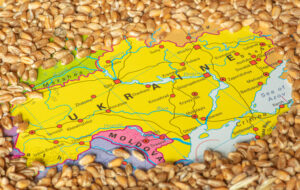
JSC Energy Company of Ukraine (ECU) is increasing electricity imports from the EU to compensate for losses in the Ukrainian power grid due to hostile attacks. Starting from mid-March, the daily volume of imports by the state-owned trader has increased by an average of 2 times.
The company continues to import electricity from Slovakia and Romania, and in March it also started supplying electricity from Hungary. Today, the company is the second largest importer of electricity in Ukraine.
“Over the past two years, Ukraine, together with the EU, has significantly increased its technical and organizational capabilities for electricity imports, which now plays a crucial role in the stable energy supply of consumers,” said Vitaliy Butenko, CEO of the Energy Company of Ukraine. “Given the continuing massive attacks on energy facilities, the Government of Ukraine continues to actively cooperate with European partners to obtain additional import opportunities.
Reference
Energy Company of Ukraine (ECU) is a national energy trading company that offers comprehensive solutions for the purchase, sale and management of energy resources. The company was established in 2022 without attracting or transferring state assets or property. Revenues are generated by high-tech trading products and instruments.
The company is one of the TOP-5 traders in Ukraine in terms of electricity sales, a leader in cross-border energy trading, and a TOP-2 trader of green electricity.
The company established the first state-owned balancing group of electricity market participants, which is now the second largest in Ukraine. The company’s customers generate 10% of Ukraine’s GDP. The company is 100% owned by the state.

The Hungarian government will impose additional restrictions on imports of agricultural products from Ukraine to protect Hungarian farmers, the Associated Press reported on Thursday, citing a statement by Agriculture Minister István Nagy.
“The European Union’s decision to allow duty-free imports of goods from Ukraine in 2022 to help its economy stay afloat has led to a large oversupply and low prices on the European agricultural market,” Nagy said at a press conference.
Speaking about the planned new measures against Ukrainian products, the minister explained that the restrictions will now also include processed grain products.
He pointed out that officials in Brussels, in Budapest’s view, ultimately failed to protect European farmers who are unable to compete with cheap Ukrainian goods, and noted that this is why Hungary will introduce additional restrictions at the national level.
Last year, Hungary imposed a ban on the import of 24 Ukrainian agricultural products. The ban applies to grain, flour, vegetable oil, some meat products and other goods. Transit was not affected by this measure.
In March, an agreement on the temporary suspension of import duties and quotas on Ukrainian products entered into force in the EU, the agency said.

The EU countries have not yet been able to agree on the upper limit of duty-free imports of Ukrainian grain, as well as the need to extend restrictions to other products from Ukraine, the German edition of n-tv reported. “In the debate on the upper limit of duty-free imports of Ukrainian grain, the 27 EU countries continue to disagree,” the publication said.
The German media cite information from European diplomats who say that there is also no clear majority among member states on the European Parliament’s proposal to extend the restrictions on poultry meat, eggs and sugar from Ukraine proposed by the European Commission in January.
Polish Radio’s correspondent in Brussels, Beata Plomecka, also confirmed that the European Parliament, influenced by farmers’ protests across Europe, last week backed an amendment to the regulation on Autonomous Trade Measures submitted by Polish MEP Andrzej Galicki.
MEPs agreed to impose import restrictions on sensitive goods, notably honey, a range of cereals, poultry meat, chicken eggs and sugar.
Poland is also lobbying to tighten import quota requirements for Ukrainian sensitive agri-commodities by using data on Ukrainian imports not only for the years 2022-2023, but also 2021, before Russia’s full-scale invasion, when there were no massive shipments of agricultural products from Ukraine.
“However, this support is absent among member states. Only Poland and the ‘frontline’ countries are demanding that the demands of the European Parliament be taken into account. At best, most countries want to reduce from three weeks to two the Commission’s mandate to impose a ban on EU imports of products whose imports destabilize the market situation,” Polish Radio stressed.” Negotiations on a possible restriction of imports of Ukrainian agricultural products in the European Council are scheduled for Tuesday evening.
As reported, in many EU countries since January 2024 there have been mass protests of farmers, who express dissatisfaction with the “green” course of the European Commission and the rise in the price of material and technical resources. One of their demands is to strengthen control over alleged unfair competition from Ukraine. Farmers claim that Ukrainian products that were once destined for Africa or the Middle East now remain in Europe, undermining the position of local producers. They also point out that Ukrainian producers are not subject to the EU’s higher environmental and social standards.

India imported $6.15 billion worth of gold in February 2023, according to the country’s Ministry of Commerce and Industry.
This is 2.3 times more than in February last year, 3.2 times more than in January this year and in general about twice the traditional average monthly levels.
That said, India Bullion and Jewellers Association president Prithviraj Kothari predicts that imports may not be significant in March due to record high gold prices. “Consumers cannot digest the current price level. If prices remain this high, it will affect demand in the current wedding season,” he told Reuters. – It makes no sense for banks and refiners to import.”
In January-February, India’s gold imports totaled $8.06 billion, 2.4 times the result of the corresponding period last year.
By the end of 2023, India imported almost 744 tons of gold worth $42.58 billion. In physical terms, the volume increased by 4%, in value terms – by 16%.
India is one of the largest consumers of gold in the world, practically not producing it itself.
Earlier, the analytical center Experts Club presented an overview of world economies over the past decades. More video analysis is available here – https://youtu.be/w5fF_GYyrIc?si=vsiB0zGYh0NI2tu0

In 2023, Ukraine reduced imports of coke and semi-coke in physical terms by 8.5% compared to 2022, to 328.697 thousand tons.
According to statistics released by the State Customs Service (SCS), coke imports in monetary terms decreased by 25.8% to $129.472 million during this period.
In 2023, Ukraine exported 3,383 thousand tons of coke, down 12.3% from 2022. In monetary terms, it decreased by 22.2% to $787 thousand.
Exports were carried out to Moldova (100% of supplies in monetary terms), while imports were mainly from Poland (88.47%), Colombia (7.72%) and the Czech Republic (3.15%).
As reported, in 2022, Ukraine reduced exports of coke and semi-coke in physical terms by 98% compared to the previous year – to 3,856 thousand tons, and in monetary terms by 97.6% – to $1,011 million. The main exports were made to Hungary (42.63% of supplies in monetary terms), Georgia (37.69%) and Turkey (17.41%).
In 2022, Ukraine imported 359.192 thousand tons of coke and semi-coke, which is 54.5% less than in 2021. In monetary terms, imports decreased by 50.3% to $174.499 million. Imports were carried out mainly from the Russian Federation (43.43% of supplies in monetary terms, before the war), Poland (30.07%) and the Czech Republic (13.15%).
As a result of the war, a number of mines and coke plants are located in the territories temporarily not controlled by Ukraine.